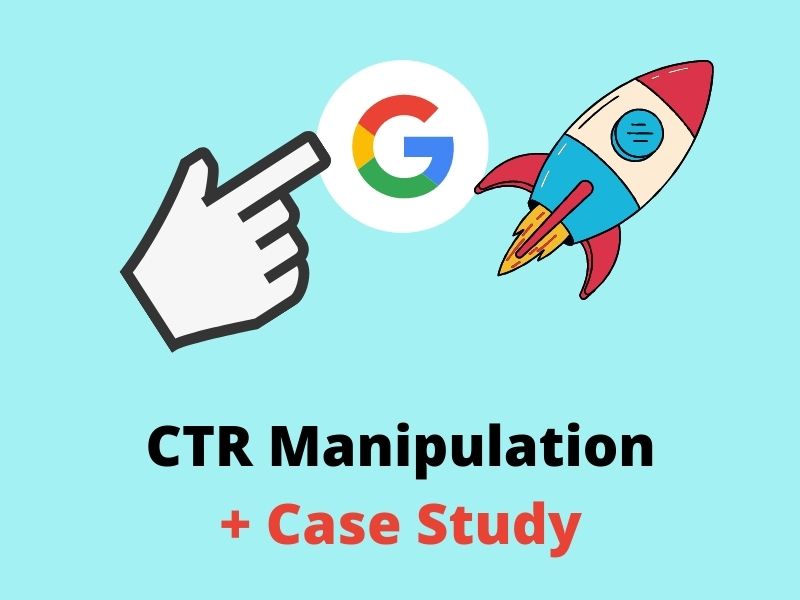LinkDaddy CTR Manipulation: Expert Services to Enhance Your Click-Through Rates
Exploring the Relationship In Between CTR Manipulation Solutions and Customer Actions
In the world of digital advertising, the influence of click-through rate (CTR) manipulation solutions on customer habits stays a complicated and interesting subject. By dissecting the intricate partnership in between CTR control services and user actions, fascinating understandings emerge that may improve our understanding of electronic advertising techniques and their effects on customers.
Effect of CTR Control on Behavior
Assessing the impact of Click-Through Rate (CTR) manipulation on customer habits reveals essential insights right into the characteristics of online interaction. CTR manipulation entails unnaturally pumping up the number of click a particular web link or ad to deceive customers and internet search engine. This technique can result in a distorted assumption of a web page's popularity or importance, eventually impacting customer habits.

Additionally, CTR manipulation can skew the data made use of by algorithms to customize user experiences. This can lead to individuals being offered material that does not line up with their choices or interests, eventually bring about a decline in user satisfaction and engagement. Comprehending the influence of CTR adjustment on individual behavior is vital for preserving transparency and trust fund in on the internet communications.
User Engagement With Controlled CTR
Customer involvement with manipulated CTR data typically results in manipulated perceptions of on-line web content appeal and significance. When users connect with web content based upon synthetically inflated Click-Through Fees (CTR), they may believe that specific info, items, or services are more popular or reliable than they actually are. This can cause individuals choosing based on deceptive information, leading to possibly undesirable end results.
Engagement metrics like sort, shares, remarks, and time invested on a page are frequently influenced by CTR adjustment. Individuals might be a lot more inclined to engage with material that shows up to have higher involvement prices, further perpetuating the cycle of manipulated perceptions. Because of this, content designers and marketers may focus on creating web content that generates high CTR instead of concentrating on developing truly valuable and appropriate product.

Emotional Effects of CTR Manipulation

Furthermore, the psychological impacts of CTR manipulation can additionally materialize in altered decision-making processes. Customers may be more likely to click content exclusively based on its perceived appeal, instead than its real value company website or importance to their demands. This behavioral change can cause a surface engagement with on the internet web content, where users might ignore premium but less prominent offerings in favor of those with unnaturally boosted CTRs.
In essence, the emotional ramifications of CTR manipulation highlight the value of maintaining transparency and authenticity in on-line communications to cultivate real user engagement and trust fund.
Moral Factors To Consider in CTR Manipulation
CTR control increases worries regarding deceiving users, distorting information analytics, and endangering the credibility of online web content. By unnaturally blowing up CTR, individuals may be deceived into clicking on web links or advertisements they would not have chosen or else, leading to an insincere online experience.
One more ethical facet to consider is the fairness of manipulating CTR to gain an unreasonable advantage over competitors. Involving in such methods not only violates concepts of justice but additionally weakens the count on that customers put in on the internet platforms. It is essential look at this web-site for organizations and digital marketing professionals to support moral requirements in their practices to make certain transparency, reliability, and lasting sustainability in the on the internet setting.
Ramifications for Digital Marketing
With the boosting reliance on electronic platforms for advertising purposes, the technique of controling click-through prices (CTR) positions substantial ramifications for the effectiveness and stability of electronic advertising strategies. CTR control can lead to manipulated information analytics, misinforming marketing professionals into thinking that their campaigns are executing much better than they in fact are. This can result in misallocation of sources, with firms buying underperforming approaches based on falsified CTRs. Additionally, when customers realize that CTRs have actually been adjusted, it can erode depend on in the brand name, resulting in long-lasting negative repercussions for client loyalty and brand name online reputation.
Additionally, making use of CTR manipulation solutions can develop an unreasonable affordable landscape, where business that participate in such practices gain a synthetic advantage over those that adhere to moral advertising and marketing requirements. This can stifle development and creativity in electronic advertising and marketing, as success ends up being more about adjustment techniques than providing genuine worth to customers. Ultimately, the effects of CTR adjustment for digital marketing extend past short-term gains, impacting the total sustainability and reputation of advertising efforts in the electronic realm.
Conclusion
Finally, the connection in between CTR control services and customer behavior is intricate and diverse. The impact of CTR control on behavior, customer engagement with adjusted CTR, mental results, honest factors to webpage consider, and ramifications for electronic advertising all play a duty fit this partnership. Comprehending these characteristics is important for marketers and scientists alike in order to browse the honest effects and make best use of the effectiveness of their electronic marketing techniques.